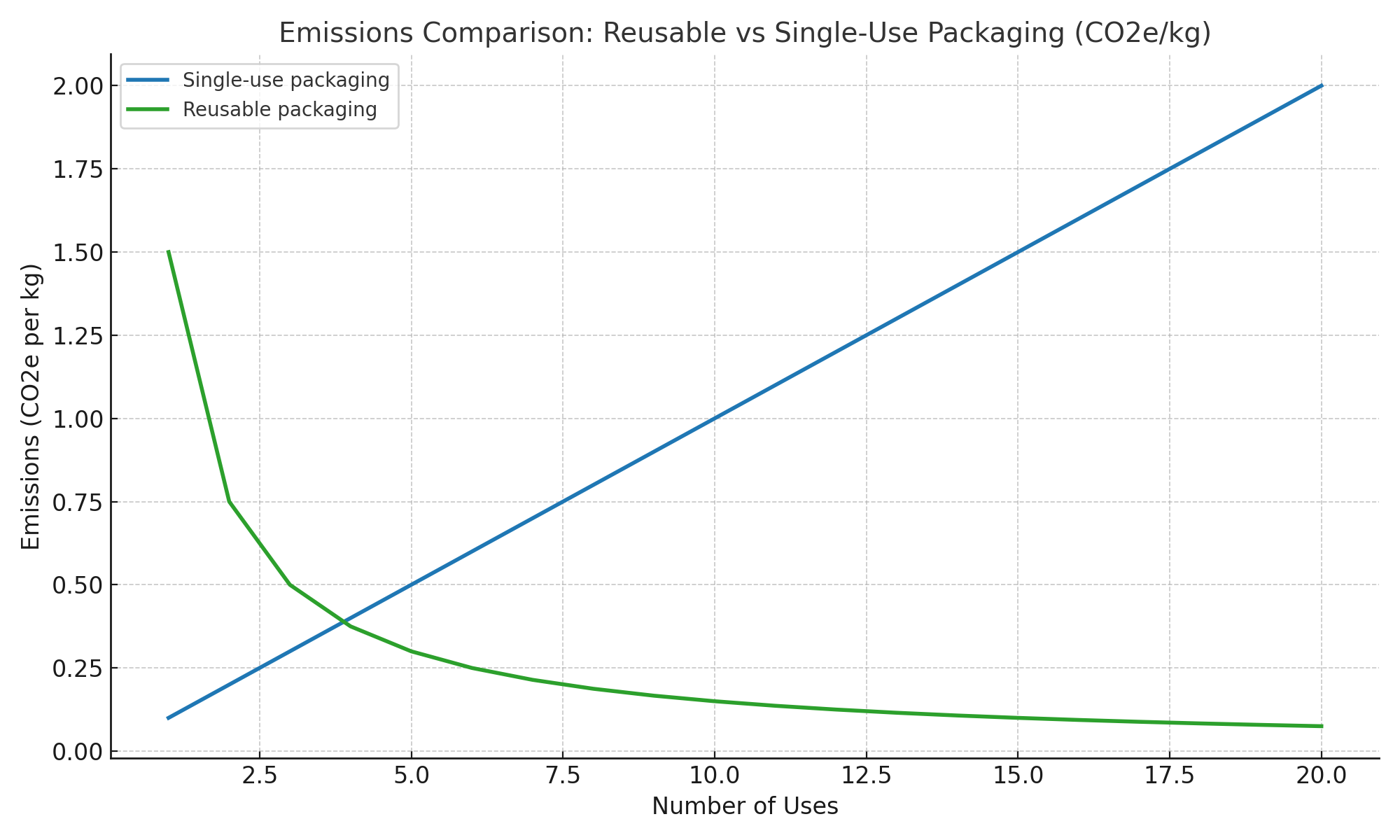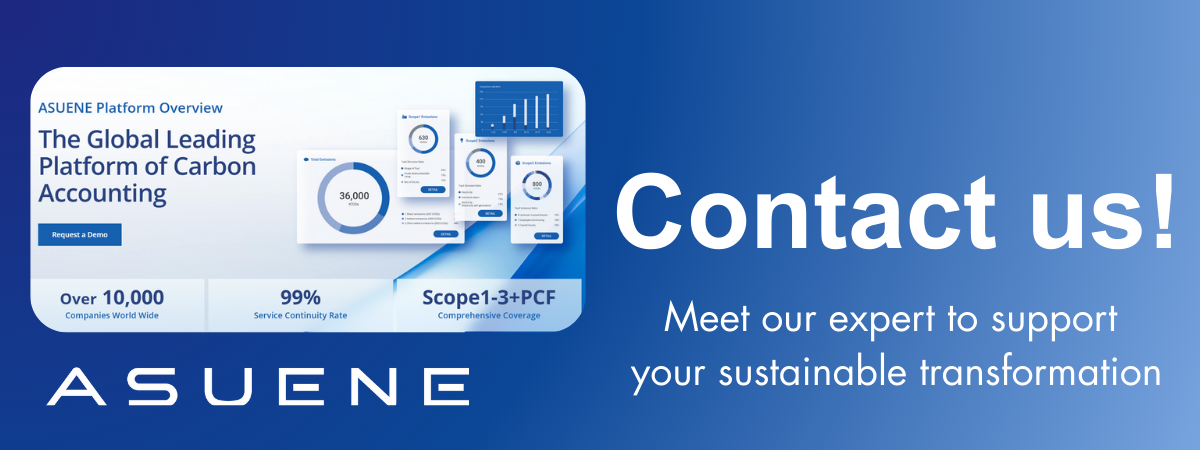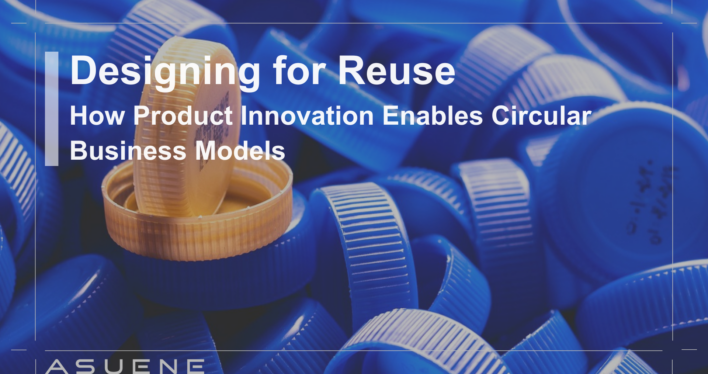- Article Summary
-
Introduction
The global push toward waste reduction and resource efficiency has propelled the concept of reusability from a lifestyle choice into a core component of corporate sustainability and product innovation. As consumers demand durable, refillable, and recyclable alternatives, and as regulations push back on single-use products, companies are rethinking product design from the ground up.
This article explores how reusable products serve as a catalyst for circular business models, and how life cycle assessment (LCA), eco-design principles, and extended producer responsibility (EPR) are driving a new wave of sustainable innovation. We highlight strategic design principles and policy frameworks that enable companies to thrive in the age of reusability.
Why Reusability Matters in Circular Economy Strategy
Reusability is not just about extending product lifespan—it’s about closing material loops. In a linear model, products are designed, used, and discarded. In a circular model, products are designed to return as resources.
Reusable products reduce environmental impacts across:
- Material extraction: Less demand for virgin raw materials.
- Production emissions: Lower cumulative emissions when items are reused.
- Waste management: Less landfill and incineration burden.
For example, a reusable stainless steel water bottle has a higher production footprint than a single-use PET bottle, but breaks even environmentally after 15 to 20 uses. Similarly, reusable e-commerce packaging can reduce GHG emissions by 60% over 20 cycles compared to disposable counterparts.
Emissions Comparison – Reusable vs Single-Use Packaging (CO2e/kg over 20 uses)

Principles of Circular Product Design
Companies aiming to shift from disposable to reusable must adopt circular design thinking from the start. Key principles include:
- Durability: Use of materials and construction that withstand repeated use.
- Modularity: Components that are easy to repair or replace.
- Standardization: Interchangeable parts that fit across product lines.
- Refillability: Packaging that supports in-store or at-home refills.
- End-of-life recovery: Easy disassembly and recyclability.
Brands like Loop, IKEA, and Ecover are applying these principles through refill stations, return logistics, and material passports. Many are also using Digital Product Passports (DPPs) to track product use and material content across the lifecycle.

Regulatory and Market Drivers
Government policy is a key enabler of the reusable product transition. In the EU, several directives and national laws are accelerating the shift:
- EU Packaging and Packaging Waste Regulation (PPWR): Mandates reuse targets and bans certain single-use formats.
- French AGEC Law: Requires reuse quotas for retail and e-commerce.
- German VerpackG: Obligates food vendors to offer reusable containers.
At the same time, B2B and consumer markets are rewarding reusable innovation:
- Retailers are seeking circular-ready products to meet ESG commitments.
- Investors are favoring businesses aligned with EU Taxonomy circular objectives.
- Consumers are showing willingness to pay premiums for durable goods.
Table: Example Reusable Product Innovations by Sector
| Sector | Innovation Example | Company |
|---|---|---|
| Food & Beverage | Stainless steel cup return programs | Starbucks, Recup |
| Beauty | Refillable shampoo and lotion bottles | The Body Shop |
| Fashion | Modular shoes and rental services | Adidas, HURR |
| Logistics | Reusable packaging for online deliveries | RePack, Returnity |
Measuring Impact Through LCA and Circular KPIs
Quantifying the benefits of reusable systems requires robust measurement. Life Cycle Assessment (LCA) provides the baseline environmental footprint, while circular KPIs can track performance:
- Reuse ratio: % of units reused vs. total distributed
- Return rate: Share of products returned for reuse
- Material recovery rate: % of reusable materials recovered
- Carbon breakeven point: Number of uses required to offset initial footprint
Software tools like OpenLCA, SimaPro, and ecoinvent are increasingly integrated into R&D pipelines to model different reuse scenarios. These insights enable companies to optimize design and demonstrate environmental impact to stakeholders.
Conclusion
Reusable products are more than a trend—they are a cornerstone of the circular economy. With the right design, policy support, and measurement systems, they can reduce environmental burdens, build consumer loyalty, and drive systemic change.
By investing in reuse, companies are not only meeting sustainability goals—they are future-proofing their business models for a resource-constrained, regulation-driven, and impact-conscious economy.
Why Work with ASUENE Inc.?
Asuene is a key player in carbon accounting, offering a comprehensive platform that measures, reduces, and reports emissions, including Scope 1-3, with expertise in decarbonization. Asuene serves over 10,000 clients worldwide, providing an all-in-one solution that integrates GHG accounting, ESG supply chain management, a Carbon Credit exchange platform, and third-party verification.
ASUENE supports companies in achieving net-zero goals through advanced technology, consulting services, and an extensive network.


